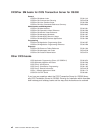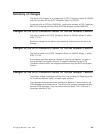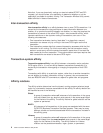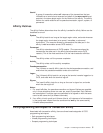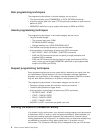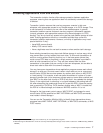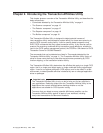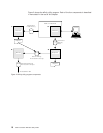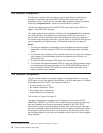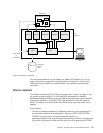
Safe programming techniques
The programming techniques in the safe category are the use of:
v The communication area (COMMAREA) on CICS RETURN commands
v A terminal control table user area (TCTUA) optionally available for each terminal
defined to CICS
v ENQMODEL definitions to give sysplex-wide scope to ENQs and DEQs
Unsafe programming techniques
The programming techniques in the unsafe category are the use of:
v Long-life shared storage:
– The common work area (CWA)
– GETMAIN SHARED storage
– Storage obtained via a LOAD PROGRAM HOLD
v Task-lifetime local storage shared by synchronized tasks
v Synchronization or serialization of tasks using CICS commands:
– WAIT EVENT / WAIT EXTERNAL / WAITCICS commands
– ENQ and DEQ commands that do not specify a length parameter and
therefore ENQ by address
– ENQ and DEQ commands that do specify a length and therefore ENQ by
name, unless you have used ENQMODEL definitions to give sysplex-wide
scope to the ENQs (and DEQs)
Suspect programming techniques
Some programming techniques may create affinity, depending on exactly how they
are implemented. A good example is the use of temporary storage. Application
programs using techniques in this category must be checked to determine whether
they will work without restrictions in a dynamic routingenvironment.
The programming techniques in the suspect category are the use of:
v Temporary storage queues with restrictive naming conventions
v Transient data queues and trigger levels
v Synchronization or serialization of tasks using CICS commands:
– RETRIEVE WAIT / START
– START / CANCEL REQID
– DELAY / CANCEL REQID
– POST / CANCEL REQID
v INQUIRE and SET commands and global user exits
Avoiding the effects of transaction affinity
In a dynamic routing environment, your dynamic routing program must take account
of transaction affinity in order to route transactions effectively. Where possible, you
should avoid creating application programs that cause affinity. However, where
existing applications are concerned, it is important that you determine whether they
are affected by transaction affinity before using them in a dynamic routing
environment. The Transaction Affinities Utility is designed to help you with this task.
6 CICS Transaction Affinities Utility Guide
|
|
|
|
|
|
|
|
|
|
|
|
|
|
|



